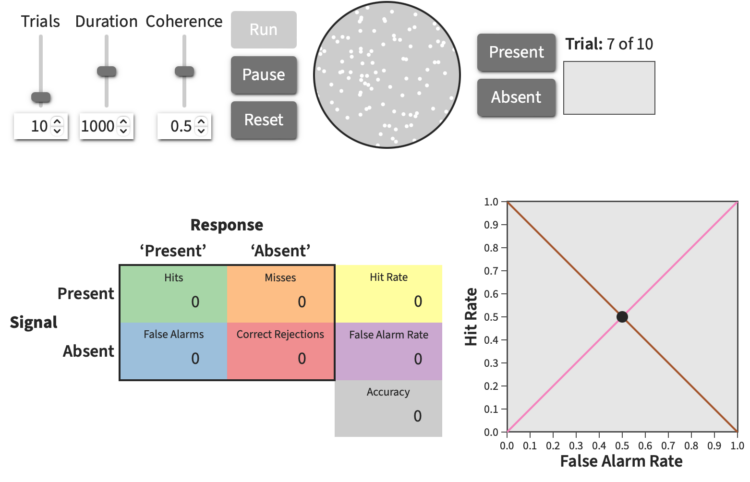When you have a lot of noisy data, it can be helpful to detect signals in some sort of quantitative and automated way rather than just eyeballing it. Signal detection theory can provide some of the pieces to this puzzle. Adam Krawitz has a detailed interactive guide:
This site approaches SDT from multiple complementary points of view. First, we use SDT to fit your empirical data from an example task, and consider how well the theory accounts for the data. Second, we use SDT to make predictions by running simulations with an SDT-based model performing the task and generating synthetic data. And third, we explore the space of possible results that can be generated by SDT, providing an existence proof for its capabilities.


